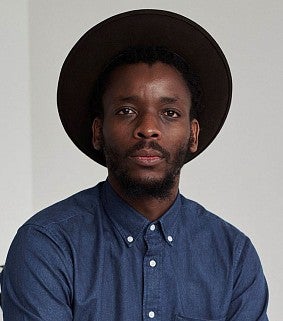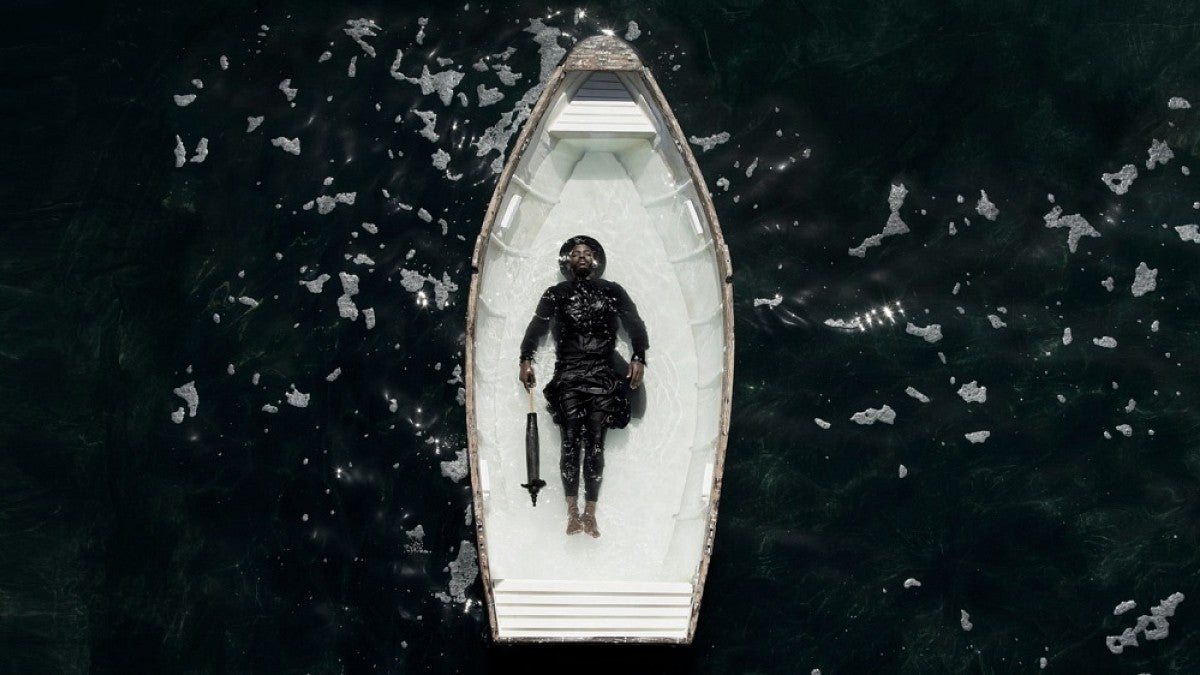“Passage,” a three-channel video installation by South African artist Mohau Modisakeng, is on view at the Jordan Schnitzer Museum of Art through early August.
Originally presented at the 2017 Venice Biennale, “Passage” offers a meditation on slavery’s dismemberment of African identity and its enduring erasure of personal histories. Modisakeng will present an artist talk Friday, May 24, at 5:30 p.m.
The Hartz FUNd for Contemporary Art and UO Division of Equity and Inclusion are sponsoring his visit. The exhibit will be on display through Aug. 9.

As the passengers lie motionless on their backs looking up at the sky, they perform a series of actions that move between gestures of struggle and resignation. A pool of water slowly forms beneath their bodies. The rising water gradually floods the well of the boat, eventually leaving the passengers submerged while the boat slowly sinks and eventually disappears.
In Setswana, the experience of life is referred to as a “passage.” The Setswana word for life, botshelo, means “to cross over,” and people are bafeti (voyagers), a recognition that the experience of life is transient: It has a beginning and an end, as with any voyage.
Jill Hartz, the museum’s executive director, and Richard Herskowitz, its curator of media arts, saw “Passage” at the 2017 Venice Biennale. They liked it so much, they stayed and watched it several times.
“We were thrilled to be able to acquire the work thanks to the Hartz FUNd for Contemporary Art,” Hartz said. “This is one of the most powerful and yet beautiful works we have seen. As contemporary curators, we’ve seen a lot of work that addresses slavery, much of that focused on its impact on American history and culture, but Modisakeng takes us back to Africa and the impact on African identities.”
Modisakeng says his “work doesn’t start off with an attempt to portray violence, but it becomes mesmerizing because although we might recognize history as our past, the body is indifferent to social changes, so it remembers.
Modisakeng was born in Soweto in 1986 and lives and works between Johannesburg and Cape Town. His work ranges from media installations to photography to performance and engages race, the militarization of society and the deep divides of post-apartheid South Africa and the post-colonial continent.
He was awarded the Sasol New Signatures Award for 2011 and has shown his work in New York, London and New Cape Town, among many international locations. His works range from video installation to photography to performance.


